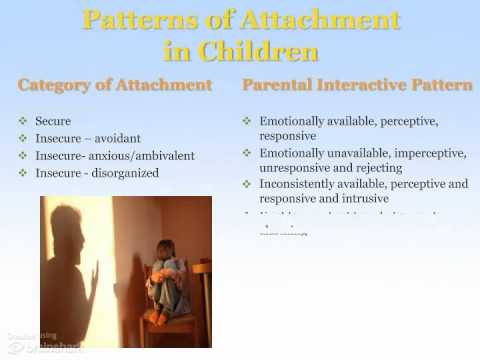We all have a relationship style, and that style varies depending on the level of trust we have with the people we interact with, this style, shape or trend is closely related to the importance of attachment.
The truth is that in our childhood we all have a number of models that have taught us, in part, what others can expect from us and what we can expect from others. A teaching that usually leave footprints, greatly influencing the way we “hang. “in “to others.
- Do you need the approval of others to understand that you’ve done something right or to show the affection of those who love you to feel safe in the relationship?Do you feel abandoned every time your partner goes out with friends or asks for time to be?Only?.
Do you think you’re jealous of your relationship?Behind all these questions is the importance of attachment.
Our style of attachment encompasses how we shape and care for our relationships. Attachment identifies how we relate to the people we care about or how we include someone in our circle of trust.
It is closely linked to our tendency to give or accept what others offer us, and also to our tendency to suspect or protect ourselves in the social sphere.
Next, we’ll look at some points to try to figure out the importance of attachment in our lives. Let’s go a little further.
In 1954, Mary Ainsworth conducted one of the most unique and notable experiments in the history of psychology, which was later dubbed the experience of ‘strange situation’.
When it was carried out, the objective was to verify how the babies were related to the figure of the main caregiver and to analyze, with this, the exploratory behavior of the baby in the presence or absence of said care, hence the previously created link between the attachment figure and the baby is what would show up in this situation.
These interactions resulted in the definition of four types of attachment: secure attachment, anxious attachment, attachment avoidance, and disorganized attachment. Does the latter understand everything? Abnormal? And difficult to integrate into other groups.
The safe attachment was linked to the children playing quietly in an unknown place, both in the presence and in the absence of the primary caregiver. Also, they didn’t show much anxiety when the caregiver left the room.
Anxiety attachment was identified with children who felt a lot of anxiety when the person they trusted left the room, this was perceived because the child stopped playing for a long time, interrupted his exploratory behavior, and kept his gaze fixed where he had left the caregiver. , making protest gestures. It’s a dependent attachment.
On the other hand, the children who showed an avoidance of attachment, as the name suggests, barely called the presence of the mother in the room and showed no reaction to her return, somehow it is as if they were indifferent to her presence or absence.
Lucky people who have created good attachment relationships with their reference characters and who have had good role models in the field of social interaction tend to show that same skill in adulthood.
They are people who do not give their trust in the first contact, but place it with joy in those who conquer it, this makes them benefit from deep relationships and full of complicity.
They are able to make plans and also understand that there are times when the scale of other people’s priorities varies and they need to focus on other people or different activities, they like contact, but they don’t feel anxious when they run out. .
The importance of attachment is great in childhood. And, as we’ve seen, it can also be later than this phase. However, this does not mean that we are doomed to repeat over and over again the same way to “hold on. “
Not having good role models or building relationships based on trust standards doesn’t mean we can’t learn later (and vice versa).
In this sense, with each relationship we have or create, we have a new opportunity to update our style of attachment, this is encouraging, because attachment is the basis of how we love and feel loved.
The importance of attachment begins in childhood, but in every relationship we establish with others, there is an opportunity to update the way we come along.

